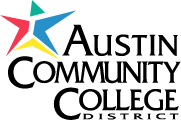By Lara Korte
Despite a wet cold front that blew in overnight, the crowd of college students began forming outside an hour before sunrise Friday morning.
At Austin Community College’s Riverside campus, the students lined up with bags or wagons, hoping for a chance to fill them with cans of beans, rice, pasta, fresh meat, vegetables and fruit offered by the Central Texas Food Bank.
For many of them, this is their only chance to get groceries for the month.
“I pretty much only eat the food they give me here,” said Gabriel Parker, a 20-year-old welding student. “In Austin, rent’s a lot. We’re in one of the cheapest places, and I still need some more help.”
Parker, like hundreds of other college students in Austin, struggles to maintain regular access to food. Food insecurity at universities is a growing problem across the nation, but especially in this city, where rent and cost of living have skyrocketed in recent years. As the problem becomes more apparent, many universities are working to fill in the gaps for their students, who sometimes go days without a meal.
“It’s honestly our responsibility,” said Kelly Brown, an ACC student life supervisor. “Because you can’t just look at the student and only think about the academics.”
In 2017, a survey of ACC students found nearly 34% were food-insecure. A recent national survey put that number higher, between 40% and 48%. Although food pantries had existed in some spaces across the school, ACC wanted to do more, Brown said.
Since then, the school has opened a food pantry at every student life office across about a dozen campuses. Pantries are filled with nonperishables, such as cans of beans, boxes of macaroni and cheese, and jars of peanut butter.
Students can drop by the pantry at any time, but once a month they have the opportunity to get fresh produce, meat and dairy items from the Central Texas Food Bank’s mobile distribution center. The donation runs from 9 a.m. to noon. By the end of it, workers have handed out more than 16,000 pounds of groceries to nearly 350 students.
“Not everybody has the advantage of getting free food,” said Julie Salinas, an 18-year-old nursing student. “It’s beneficial for a lot of people, and for me too.”
Elizabeth Peña, director of agency services at the Central Texas Food Bank, said the agency has seen the need among college students grow in recent years and has begun to target university populations. Several schools have reached out to the food bank, looking for ways to partner with the agency and supplement their own campus pantries.
“Sometimes we don’t think about food insecurity among college students; we just look at academics,” ACC’s Brown said. “But if a student doesn’t eat, they’re going to be struggling through class; they’re going to be hungry, so they can’t concentrate. It really does have a domino effect.”
But it’s not just about having access to food. For many students, there’s a stigma. Last year, Marcus Delzell, a junior at St. Edward’s University in Austin, said he went a total of 60 days without eating. At some points, he went 10 days in a row without a meal. He worked two jobs outside of class to cover his school and housing costs, but there just wasn’t enough for food, he said.
St. Edward’s does have resources for students who find themselves in situations like Delzell’s. A peer-to-peer meal plan service allows students to transfer up to $300 of meal plan credits to a classmate, and at the St. Ignatius Food Pantry, right around the corner from St. Edward’s, students can get up to a month of free food.
Still, Delzell said he couldn’t bring himself to seek help.
“It was out of complete stubbornness and humiliation,” he said. “I felt that something would need to be wrong with me, and the only thing that was wrong with me is that I’m a student.”
Some universities have tried to mitigate this fear. At the University of Texas, the UT Outpost has built a space that’s designed to make students feel welcome and dignified. In addition to a pantry, the organization has a career closet, where students can pick out professional work wear, free of cost. The space is painted bright blue and green, with yellow shopping baskets for browsing the shelves.
“We wanted the space to feel like a regular store you would go into,” said Will Ross, coordinator of UT Outpost.
Nearly 24% of undergraduates at UT are food insecure, according to a recent study that surveyed students in 2014 and 2015. Thirty-seven percent of those who said they cut meal sizes or skipped eating entirely said they did so at least once a month.
The goal of resources like UT Outpost, Ross said, is to let students know they’re not alone, and that there are people willing to help.
“What’s scary is that students may not realize they’re dealing with food insecurity and not knowing where resources are,” he said. “We’re a tool for your success. It’s not ‘Oh, poor you,’ it’s like, ‘Let me support you.’”
Tags: Austin American-Statesman, Central Texas Food Bank, Food Insecurity, student support
Back to Top
